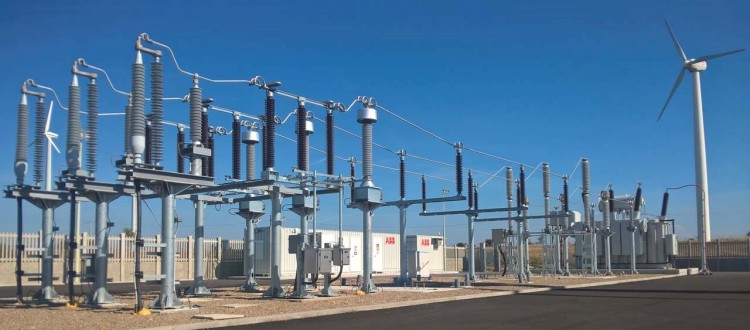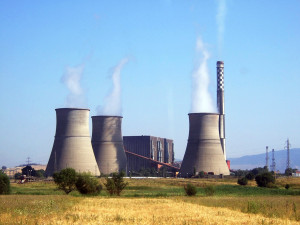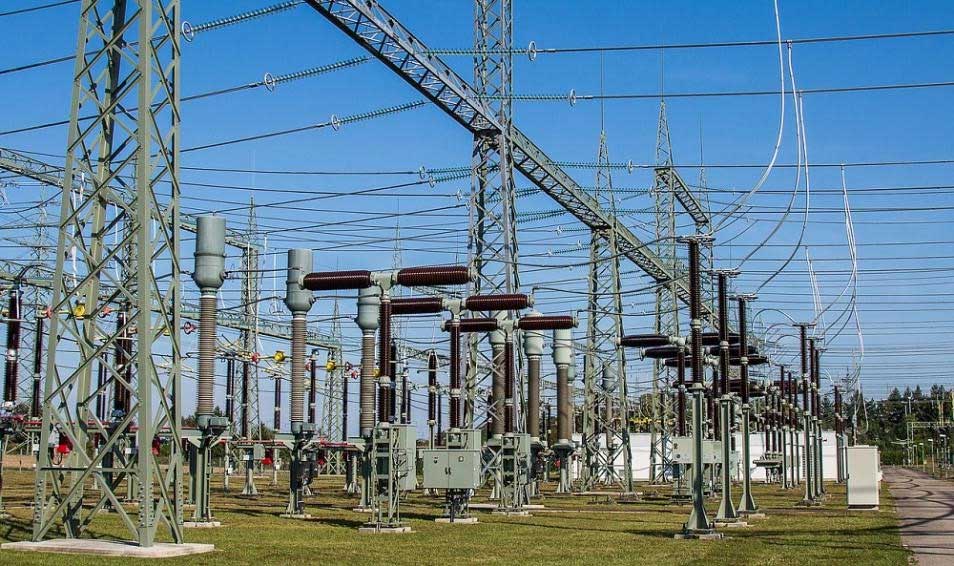Electricity Generation and Substation
Introduction
Where high electric power is produced by a unique plant that’s called power plant or electricity generation station, a power plant is an industrial facility that generates electricity from some other forms of energy. Most of the power plant uses one or more alternators or generators that convert mechanical energy into the electrical energy except solar power plant. The solar power plant used photovoltaic cells to produce electric power.
Electricity generation and substation is the primary consideration in the power system. There are various types of electrical generation station such as
- Steam Power plant
- Hydroelectric power plant
- Nuclear power plant
- Diesel Power plant
- Wind Power plant
- Solar Power plant
Steam Power Plant (SPP)
The steam power plant consists of generators, steam turbines, boiler, cooling arrangement, preheater or super-heater, and other essential arrangements. The furnace produces steam at the high temperature, and high pressure and steam go and heat the steam turbine.
This turbine converts steam energy into mechanical strength, and the generator or alternator converts mechanical energy into electrical power. Turbine turbines and steam engines operate at the Rankin cycle, which has a maximum efficiency of 63%.
Hydroelectric Power Plant (HPP)
Where kinetic energy of the water is transfer into electrical energy, which is called hydroelectric power plant. Power is gained from the activity of the water. Rain hits the water turbine, and the turbine transfers the kinetic energy into mechanical energy.
This mechanical energy is transferred to the alternator, which converts mechanical power into electrical power. Hydro-electric power is a renewable power plant that is safe for the environment because there is no smoke, air pollution, and toxic byproducts. Its running cost is low
Nuclear Power Plant (NPP)
Nuclear power plant the nuclear energy originates by the splitting of uranium; this is called fission reaction. This process generates heat, and steam is produced that is used in a generator to generate electricity.
There are two types of nuclear reactions, like nuclear fusion and nuclear fission. A nuclear fission reaction is used to generate electricity. Running cost or per-unit price of the nuclear power plant is low, but the construction cost is this plant can generate very high electricity.
Diesel Power Plant (DPP)
The diesel power plant is called a standby power plant due to this type of power plant is used for peak hours. The diesel engine is used as a prime-mover for the production of electricity. This power plant is compact; this type of power station is used for a small amount of electric power like 50 MW, 25 MW or so. Because it’s running cost is too high.
Wind power plant (WPP)
The wind turbine used in wind power plants, which convert the wind power into electrical power by rotating blades around a rotor. The rotor turns the drive shaft that bout a power generator. Three main factors affect the energy a turbine can facing from the wind, such as wind speed, swept area, air density.
Solar power Plant (SPP)
The solar power plant is a type of flexibility that converts sunlight either directly, like solar power plants into electricity. They come into a variety of odor, with each using directly different techniques to harness the power of the sun. Generally, solar panels use costly semiconductor material to generate electricity. The efficiency of solar cells is low, only about 22%.
Substation
Where electric voltage is changed by a unique apparatus that is called substation, the power system consists of three parts Generation, Transmission, and distribution. The substation is an essential portion of a generation, transmission, and distribution system. The substation is used to change the voltage level.
Types of Substation
There are two types of a substation, and these are subdivided such as
- Constructional Feature
- Service requirement
Service Requirement (SR)
Accordant to the service requirement substation, there are six types of service requirement Substation such as
Transformer type Substation
Where the voltage level is changed by using the transformer which, is called the transformer type substation. These substations accept power at the same voltage and send it to some other energy. A transformer is an essential element of that type of station. So most of the substations of the system are the transformer type substation.
Switching substation (SS)
Where the incoming and outgoing voltage level is same, there is no change in voltage level which is called switching substation it performs by the switching operation of power lines
Power factor correction substation
Those station that improves the power factor of the system these are called power factor correction substations these type of substations is located at the receiving end of transmission lines. Synchronous motor or capacitor bank is used to improve power factor
Frequency changer substation
Frequency changer substation where frequency level is changed basically, these types of the station is used for industrial purposes
Converting Substation
Where the electric power is converted into an alternating voltage to direct voltage, these types of the substation are called converting substations. It receives AC power and turns it into DC power; this power is suitable for electric traction purposes, electric welding, electroplating, etc.
Industrial Substation
Those stations which supply power to individual industrial utilizations are known as industrial substation
Constructional Feature
Constructional feature substation has many components like switches, circuit breakers fuses, instrument transformer, etc. Which must be appropriately housed to make sure continuous and reliable service. There are four types of constructional feature substation
Indoor substation
For voltage up to 11 kV, the equipment is installed indoor substation due to the economic considerations. When the atmosphere is contaminated with impurities, these substations can be erected for voltage up to 66 kV.
Outdoor substation
For voltage beyond 66 kV, the outdoor substation is installed it is because, for such energies, the clearance between conductor and space requires switches, circuit breakers, and other equipment. Still, it is not economical to install the equipment indoor.
Underground substation
The thickly populated areas, the space available for building and equipment and the cost of land is very high. Under such situations, the underground substation is created. The underground substation is very expensive than overhead.
Pole-mounted substation
The pole-mounted substation is an outdoor type with equipment installed overhead on the H-pole structure. It is the standard form of substation for voltages, not more than 11 kV or 33 kV. Electric power is almost transmitted and distributed in localities through such substations.
Central and Compact Substation
The new central substation was built to remove approximately 51 MVA of land from the existing station in the future. The design included a 138 kV six-position circuit breaker and a half scheme with three transformer positions.
Electricity generation and substation voltage of Bangladesh is 11 kV, and step up to the 132 kV/230 kV. And step down the voltage for consumer premises by using substation.
The transformers are 138-13.8 kV 18/24/30 MVA transformers feed a dual line-up, 24-feeder, 3000 A switchgear unit located in an electrical equipment enclosure. Compact substations are used electrical power transformation in secondary distribution network from MV to LV or LV to MV.
So central and compact substations are used to energy transformation. Compacts are typically installed in locations accessible to the public and ensure protection for all people according to specified service conditions.
High and Low Voltage Substation
High and low voltage substation is used to electric voltage system facility. A lot of protective and controlling equipment is used there like a circuit breaker, switches, isolator, insulator, lightning arrestor, and other material.
These types of substations are used to extra-high voltage to low voltage and low voltage high voltage. And the conversion of alternating current to direct current to alternating current. Like 756 kV, to 230 kV, to 33 kV, 11 kV distribution voltage.
And step up the voltage level from low voltage to a high voltage such as 11 kV to 33 kV, 132 kV, or 230 kV, 400 kV, or so. It depends on the distance of the transmission line.
Electrical Substation Course near me
The electrical substation course is essential for an electrical engineer; it is a fundamental part of power engineering. You can learn industry-specific knowledge about power substation that you would not have known unless you worked within the utility industry for several years.
Bangladesh Automation Technologies is the better training institute in Dhaka, Bangladesh. There is a lot of substation equipment in this institute such as distribution transformer, instrument transformer, insulator, dropout fuse, lightning arrestor, circuit breaker, HT, LT panel, capacitor bank for power factor Improvement, and other essential equipment.
On the other hand, you will get a better concept of electricity generation and substation. So you will acquire more practical knowledge after completing the course from Bangladesh Automation Technologies.
Conclusion
Electricity generation and substation is the central part of the power system. In Bangladeshi power generation, transmission, and distribution, electricity is generated 11 kV and step up to the high voltage 132 kV/230 kV by using the generation substation. This high voltage is transmitted through the transmission line at various locations.
And step down this high voltage in national grid substation 132 kV/230 kV to 33 kV this secondary transmission voltage run along the outskirt of the city and step down the voltage level 33 kV to 11 kV due to the consumer premises.
Bangladesh Automation technology is the better training institute you will get proper design and practical knowledge about electricity generation and substation.


